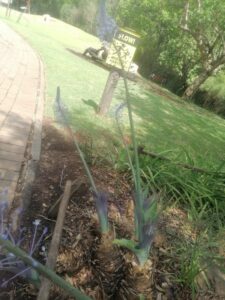Merwilla dracomontana

Unlocking the Dragon’s Secret: Propagating Merwilla dracomontana
The Merwilla dracomontana, also known as the Dragon Mountain Merwilla, is a captivating succulent native to the Drakensberg Mountains of South Africa. This fascinating plant enchants plant enthusiasts with its rosettes of fleshy, spotted leaves and charming, pendulous flowers that bloom in vibrant green and brown hues. While admiring its unique beauty is a delight, nothing beats the satisfaction of multiplying your collection by propagating new plants.
This guide delves into the various methods to unlock the Dragon’s secret and propagate Merwilla dracomontana successfully.
Understanding Merwilla dracomontana
Before diving into propagation, it’s helpful to understand the plant’s natural growth cycle. The Merwilla dracomontana is a bulbous plant, meaning its life cycle revolves around a bulb that stores nutrients. This bulb facilitates growth and enables the plant to survive periods of dormancy. Understanding this cycle is crucial for choosing the right propagation method and timing it effectively.
Methods of Propagation
You can propagate Merwilla dracomontana using two primary methods:
1. Offsets:
Merwilla dracomontana often produces offsets, which are essentially baby plants that sprout around the base of the mother plant. Propagating from offsets is relatively easy and boasts a high success rate:
- Timing: The ideal time to separate offsets is during the active growing season, typically spring or early summer.
- Process: Gently remove the offset from the mother plant using a clean, sharp knife or pair of scissors, ensuring a portion of the root system is attached.
- Potting: Plant the offset in a well-draining potting mix specifically designed for succulents and cacti.
- Care: Water sparingly and avoid overwatering, allowing the soil to dry between waterings. Place the newly potted offset in bright, indirect light and watch it flourish!
2. Seeds:
While less common and a bit more challenging, propagating from seeds allows you to witness the complete life cycle of the plant:
- Obtaining Seeds: You can collect seeds from your Merwilla dracomontana after the flowers wither or purchase them from reputable suppliers.
- Sowing: Sow the seeds in a well-draining, seed-starting mix during the warmer months.
- Germination: Keep the soil consistently moist but not soggy and provide bright, indirect light.
- Patience is Key: Seed germination can be unpredictable and may take several weeks or even months.
- Transplanting: Once the seedlings have developed a few true leaves, you can transplant them into individual pots.
Tips for Successful Propagation
Regardless of the method you choose, these tips can significantly enhance your success:
- Sanitation: Always use clean tools and pots to minimize the risk of fungal or bacterial diseases.
- Well-draining soil: Merwilla dracomontana is prone to rot in waterlogged conditions, so a well-draining potting mix is crucial.
- Light and Watering: Provide bright, indirect light and water sparingly, allowing the soil to dry completely between waterings.
- Patience: Propagation is a journey that requires patience and careful observation. Don’t be disheartened if you don’t see immediate results.
Conclusion
Propagating Merwilla dracomontana is a rewarding experience that allows you to connect with the plant on a deeper level. Whether you choose to cultivate offsets or embark on the journey from seed, each method offers a unique opportunity to expand your plant collection and witness the magic of new life unfold. With a little care, patience, and the guidance provided above, you can unlock the dragon’s secret and enjoy the beauty of Merwilla dracomontana for years to come.